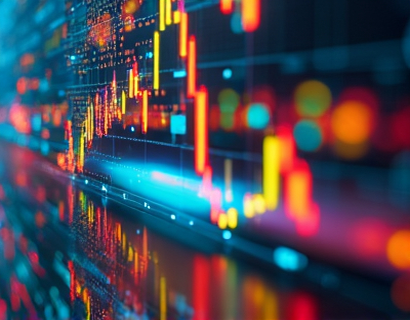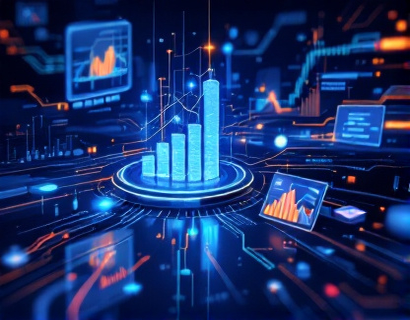Unlock Your Artistic Potential: Exploring the Digital Frontier for Creatives and Collectors
The digital age has revolutionized the way artists showcase and sell their work, breaking down geographical barriers and connecting creators with a global audience. This transformation has given rise to innovative online platforms designed specifically for artists to display and monetize their unique creations, whether physical or digital. These platforms serve as a bridge between talented artists and passionate collectors, offering a streamlined and efficient process for both buying and selling exclusive art pieces. This article delves into the benefits and opportunities these platforms provide, focusing on how they can elevate an artist's career and enrich the lives of art enthusiasts.
The Evolution of Art Sales in the Digital Age
Traditionally, artists relied on galleries, exhibitions, and word of mouth to reach potential buyers. However, the internet has democratized the art market, allowing artists to reach a broader audience with minimal barriers. Online platforms have emerged as the new galleries, providing artists with tools to create virtual exhibitions, manage sales, and interact directly with collectors. These platforms not only offer exposure but also provide valuable insights into market trends, helping artists refine their craft and business strategies.
Benefits for Artists
For artists, joining a digital marketplace offers numerous advantages. Firstly, it provides an extensive reach, as these platforms often have millions of active users worldwide. This exposure can lead to increased visibility and potential sales that might not have been possible through local or traditional means. Secondly, the cost of participating is generally low or non-existent, making it an accessible option for emerging and established artists alike. Additionally, these platforms often offer robust marketing tools and analytics, enabling artists to understand their audience better and tailor their strategies accordingly.
Another significant benefit is the ability to diversify income streams. Artists can sell their work directly to collectors, bypassing intermediaries and retaining a larger share of the profits. This direct connection also fosters a more personal relationship between the artist and the buyer, enhancing the overall experience for both parties. Furthermore, the digital nature of the platform allows artists to showcase a wider range of media, from traditional paintings and sculptures to digital art and photography, catering to diverse collector preferences.
Opportunities for Collectors
Collectors, on the other hand, gain access to a vast array of unique and high-quality artworks from around the globe. The convenience of shopping from home, combined with detailed artist profiles and high-quality images, makes the buying process more enjoyable and informed. Collectors can discover emerging talent alongside established names, often finding hidden gems that might not be visible in traditional gallery settings. The authenticity and provenance of artworks are typically verified by the platform, providing collectors with peace of mind when making purchases.
Moreover, these platforms often host virtual exhibitions and events, offering collectors a dynamic and engaging way to explore art. Interactive features such as artist Q&A sessions, behind-the-scenes content, and community forums enhance the collector's experience, fostering a deeper connection with the art and the artists. This direct interaction can lead to more meaningful purchases and a greater appreciation of the artistic process.
How the Platform Works
The core functionality of these digital marketplaces is designed to be user-friendly and intuitive. Artists create profiles, upload their artwork, and set prices, with the option to provide detailed descriptions, mediums used, and inspiration behind each piece. The platform's search and filter features allow collectors to find artworks based on various criteria, such as price, medium, style, and artist location. Once a collector finds a piece they're interested in, they can easily purchase it, with secure payment processing and shipping arrangements handled through the platform.
For artists, managing their online presence is simplified through dashboards that track sales, views, and analytics. These insights help artists understand which pieces are performing well and adjust their strategies accordingly. The platform also offers customer support to assist with any technical issues or sales queries, ensuring a smooth experience for all users.
Building a Community
One of the most valuable aspects of these digital marketplaces is the community they foster. Artists and collectors can connect, share ideas, and provide feedback, creating a supportive and collaborative environment. This community aspect is crucial for the growth and development of both parties. For artists, feedback from collectors and peers can be invaluable, offering new perspectives and inspiration. For collectors, engaging with artists and other collectors enriches their understanding and appreciation of art.
The platform often hosts virtual events, webinars, and workshops, further enhancing the community experience. These events can range from art-making tutorials to discussions on market trends, providing continuous learning opportunities. Such initiatives not only educate but also build a sense of belonging, making the platform a hub for artistic and cultural exchange.
Challenges and Considerations
While the benefits are numerous, it's important to acknowledge potential challenges. For artists, the competition can be fierce, and standing out requires consistent effort in marketing and quality production. Additionally, understanding the platform's fees and how they impact profit margins is crucial. Collectors, too, must be discerning, as the abundance of artworks can make it challenging to identify genuine pieces and emerging talent.
Another consideration is the digital divide. Not all artists or collectors have equal access to technology or the internet, which can limit participation. However, as digital infrastructure continues to improve globally, this barrier is gradually being overcome. It's also important for platforms to ensure robust security measures to protect both artists and collectors from fraud and ensure trust in the system.
Future Trends in Digital Art Marketplaces
The future of digital art marketplaces looks promising, with ongoing advancements in technology enhancing the user experience. Virtual and augmented reality features are being integrated, allowing collectors to visualize artworks in their own spaces before purchasing. Blockchain technology is also making inroads, providing a secure and transparent way to verify ownership and provenance of digital artworks, a crucial aspect as the market for NFTs (Non-Fungible Tokens) continues to grow.
Furthermore, the rise of social media and influencer culture is influencing how art is discovered and consumed. Platforms that leverage these trends, offering seamless integration with social media profiles, can further expand their reach and appeal. Collaborations between artists, brands, and tech companies are likely to become more common, opening new avenues for creativity and monetization.
Conclusion
In conclusion, digital marketplaces for art offer a transformative opportunity for both artists and collectors. They provide a platform for artists to showcase their work to a global audience, diversify their income streams, and build a community of supporters. For collectors, these platforms offer access to unique and high-quality artworks, a more engaging buying experience, and the chance to support emerging talent. As technology continues to evolve, these platforms will likely become even more integral to the art world, shaping the future of how art is created, shared, and appreciated.











































